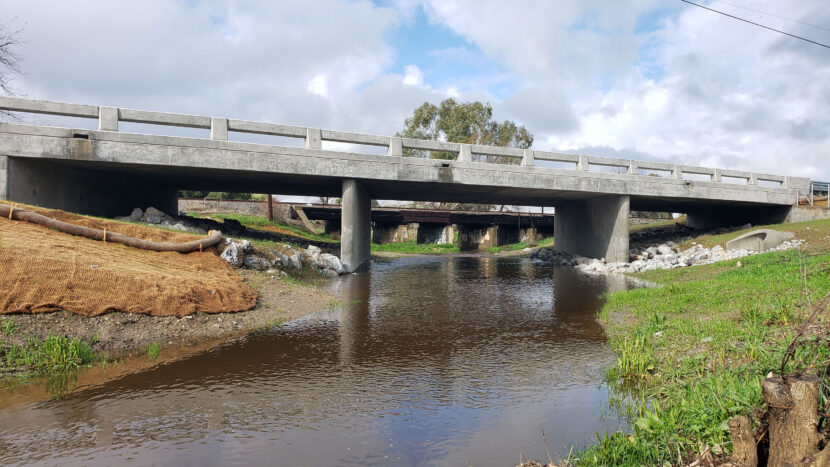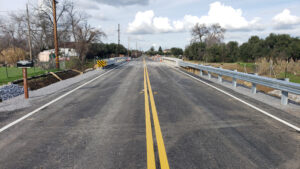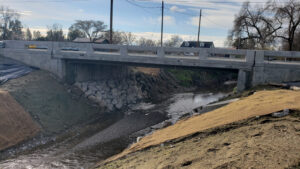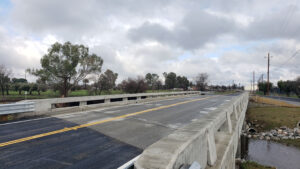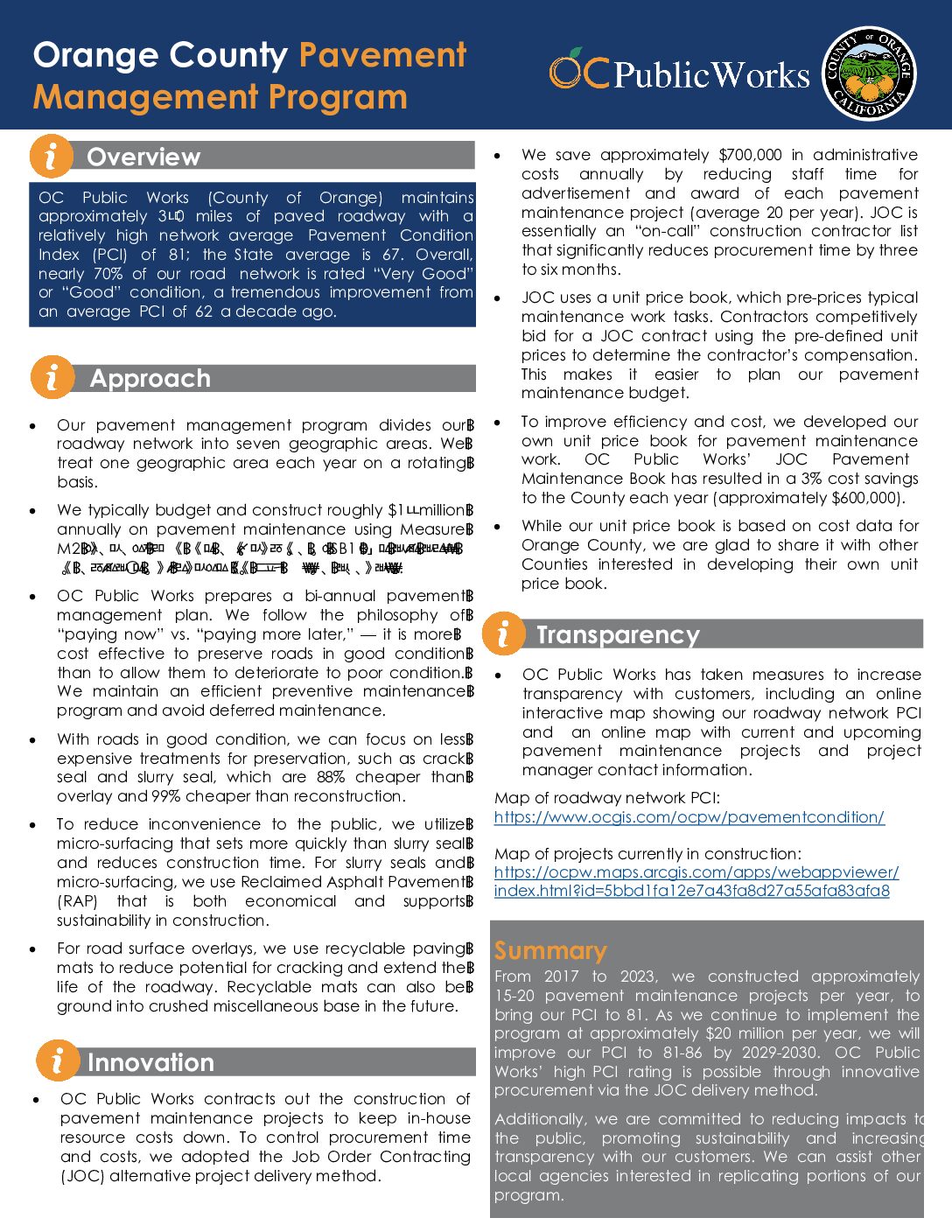Kirkwood Road and Columbia Avenue Bridges
Location
Over Jewett Creek just south of Corning, CA
City or County Responsible for Project
Tehama County
Category
Bridge: Efficient and Sustainable Bridge Maintenance, Construction and Reconstruction Projects
Description
Tehama County completed the new Kirkwood Road and Columbia Ave Bridges over Jewett Creek in December 2023. The old bridges were at the end of their service lives and both steel girder bridges were narrow with no shoulders. The Kirkwood Bridge was previously restricted to one lane due to the bridge’s condition. The new wider bridge at Kirkwood now has a 32-foot clear roadway width, while Columbia now has a 24-foot width. Both are now reinforced concrete slab type bridges and offer many advantages. These new bridges meet the function classification, terrain, and AASHTO standards; and provide safe and modern facilities for County residents and local agribusiness.
Key design features provide service longevity, limited maintenance, and positive environmental effects including reduced risk of flooding. Concrete bridges require relatively little maintenance over the service life. Each of the bridges were lengthened to accommodate the natural stream width. The Kirkwood bridge went from a 5-span bridge to a 3-span bridge. This resulted in less permanent impacts to the stream channel. Roadside drainage improvements that alleviate flooding beyond the stream channel were also included.
Permitting agencies that the County cooperated with included:
• Regional Water Quality Control Board
• US Army Corps of Engineers
• California Department of Fish and Wildlife
• US Fish and Wildlife Service
• National Oceanic and Atmospheric Administration/National Marine Fisheries Service
Significant railroad coordination with UPRR and CNFR regarding permanent project impacts and temporary construction easements were needed on Kirkwood. Additional coordination with CNFR during construction was required to protect construction equipment and personnel safety adjacent to the active railroad. Railroad flagging was required to provide train and worker safety.
The construction of the Kirkwood Project was funded mostly by the Federal Highway Administration (FHWA) Highway Bridge Program (HBP) (88.53%) and required a non-federal match (11.47%) coming via the STIP. The Columbia project was 100% funded through the FHWA HBP (88.53%) and toll credits (11.47%).
A creative approach in the planning of these bridges was bundling the separate Federal Aid Projects into one package for efficiency of project administration, project development and delivery, permitting, construction management, and construction economy of scale. This progressive approach provided significant schedule efficiencies as well as cost savings. A shortened construction duration was very desirable due to the surrounding community, property owners, and traffic. Bundling as one construction project provided for streamlined completion of both new bridges. By using resources efficiently, both bridges were demolished, constructed, and paved within just 115 calendar days. Bundling bridge projects in development and construction is a good model for project delivery efficiency.
In addition to being a successful project from a quick completion standpoint, the project should be considered a financial success as well. With eight RFIs resolved and seven change orders of a total of less than 3% of the construction budget, combined with elements of work that were deleted because they were not necessary (in stream work and others), the project was effectively completed within the original contract budget with no claims pending or accepted. This was the result of good teamwork throughout the project and firm but fair negotiation of issues.
Project submitted by
Jason Jurrens
District Manager, California Transportation
Consor
11017 Cobblerock Dr., Suite 100, Rancho Cordova, CA 95762
JasonJurrens@consoreng.com; Lise.Beagley@consoreng.com
9163689181

